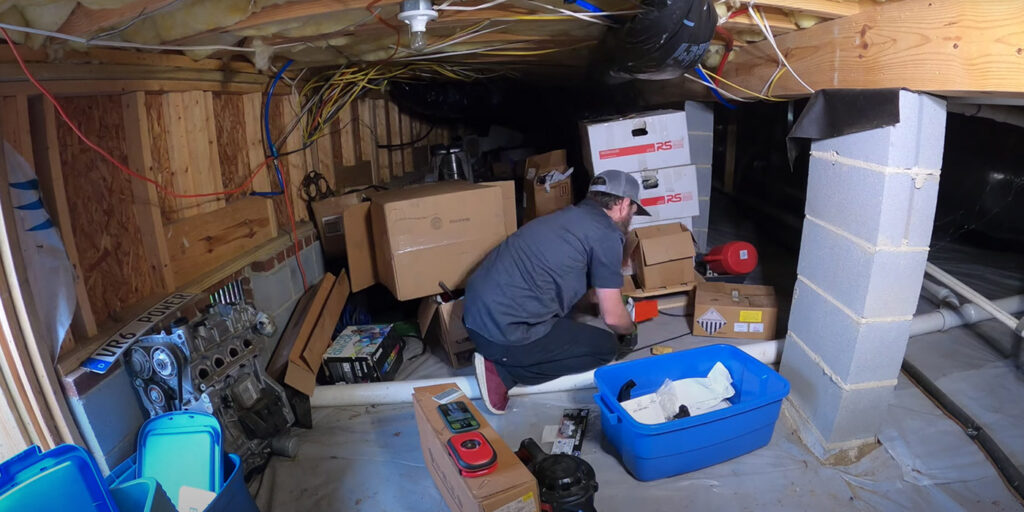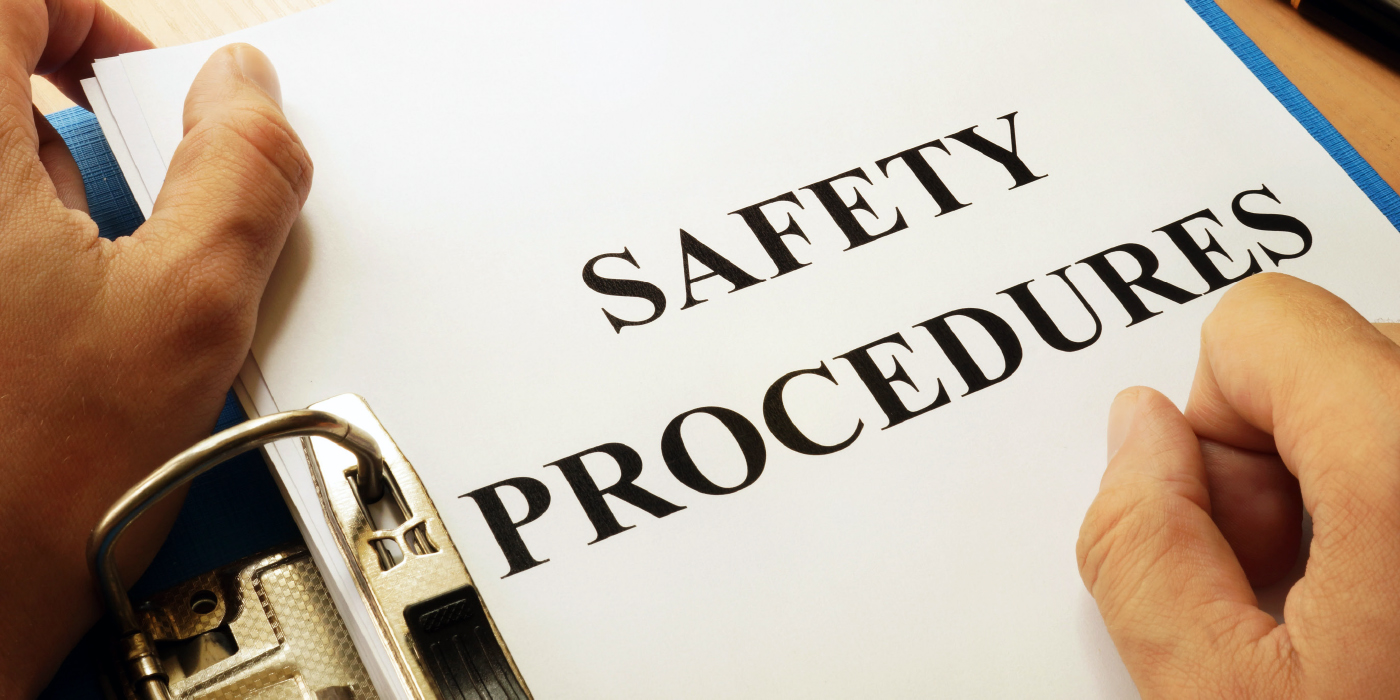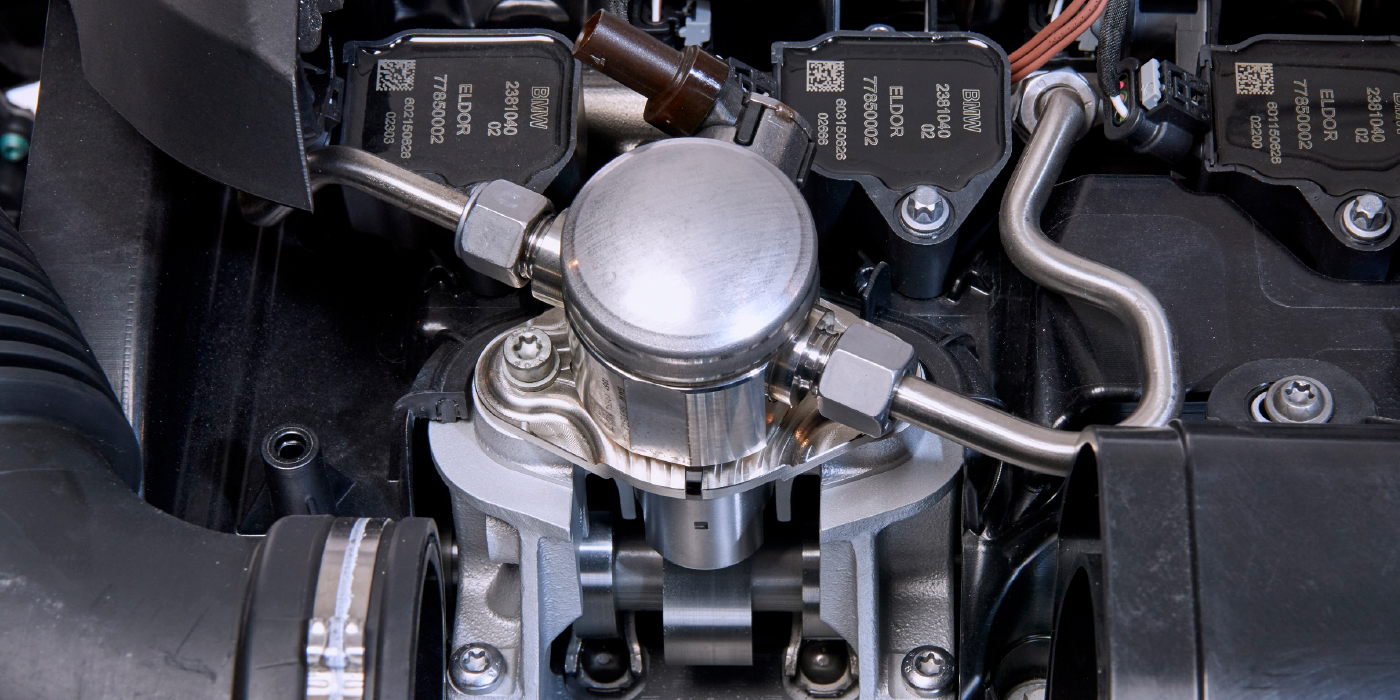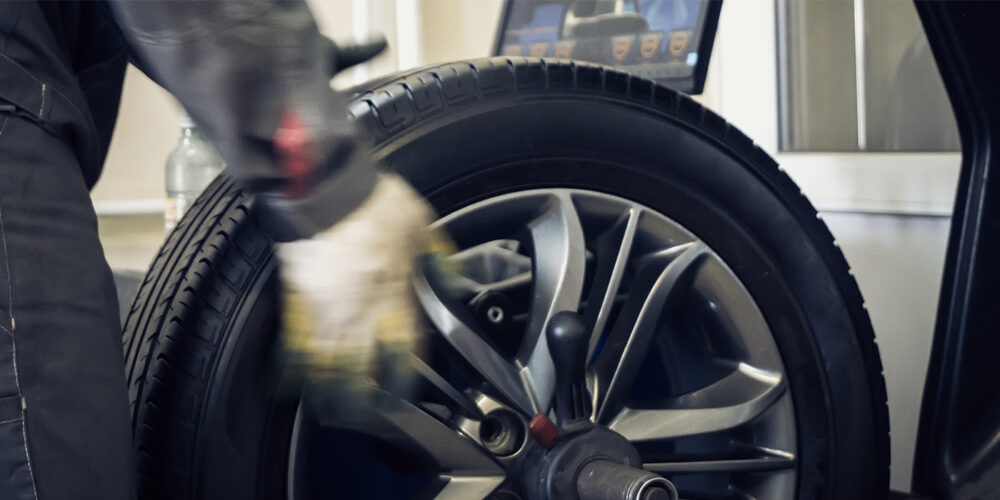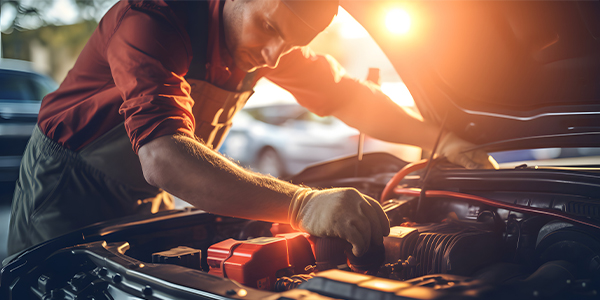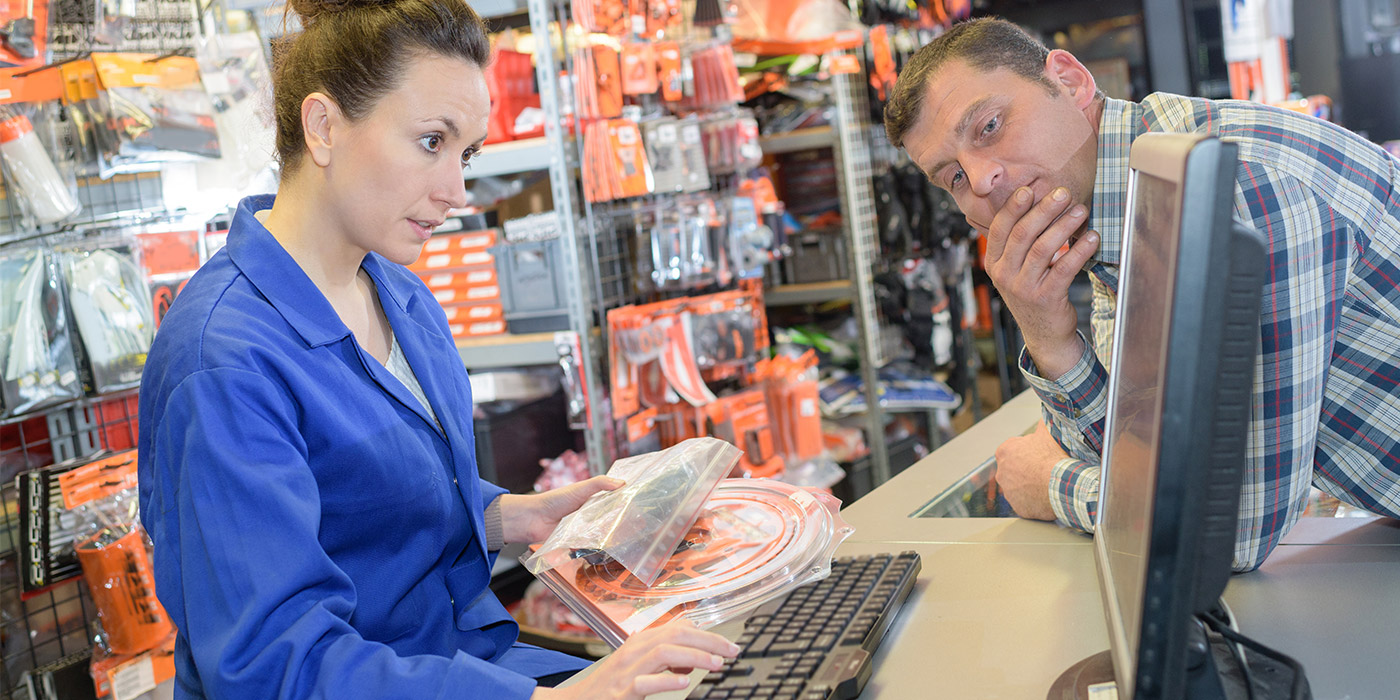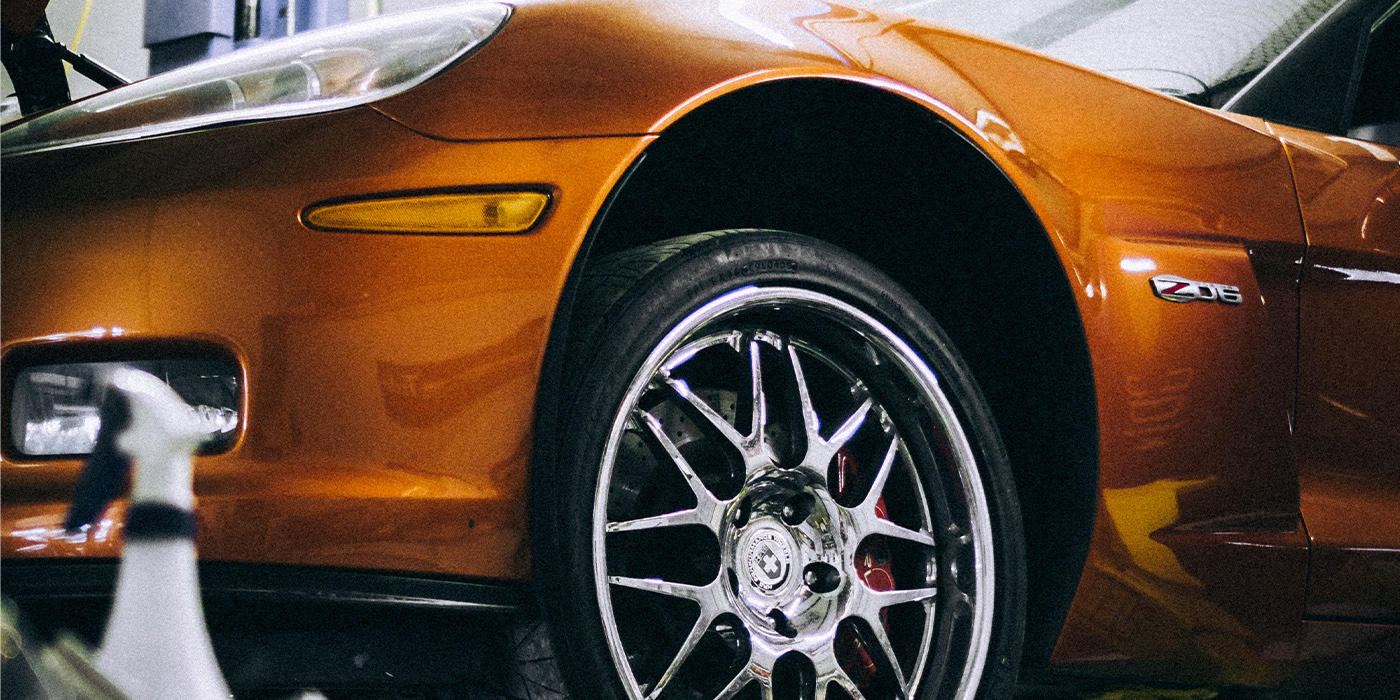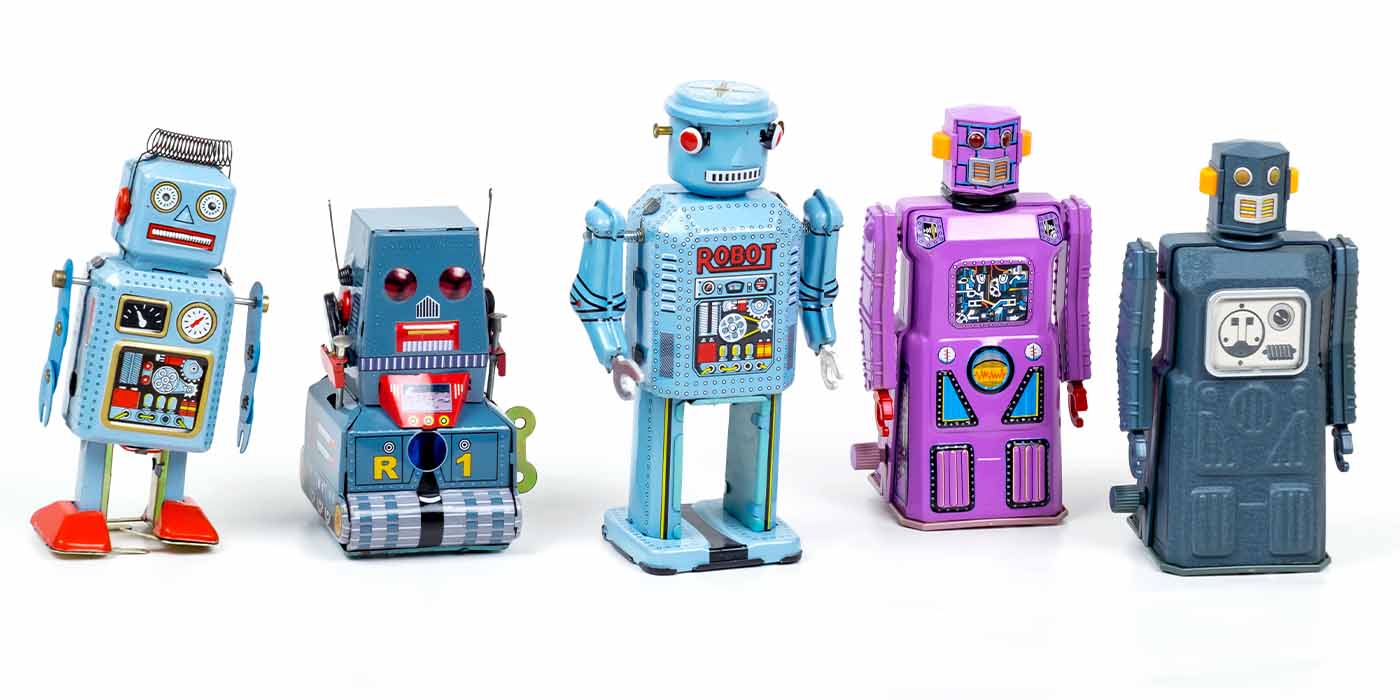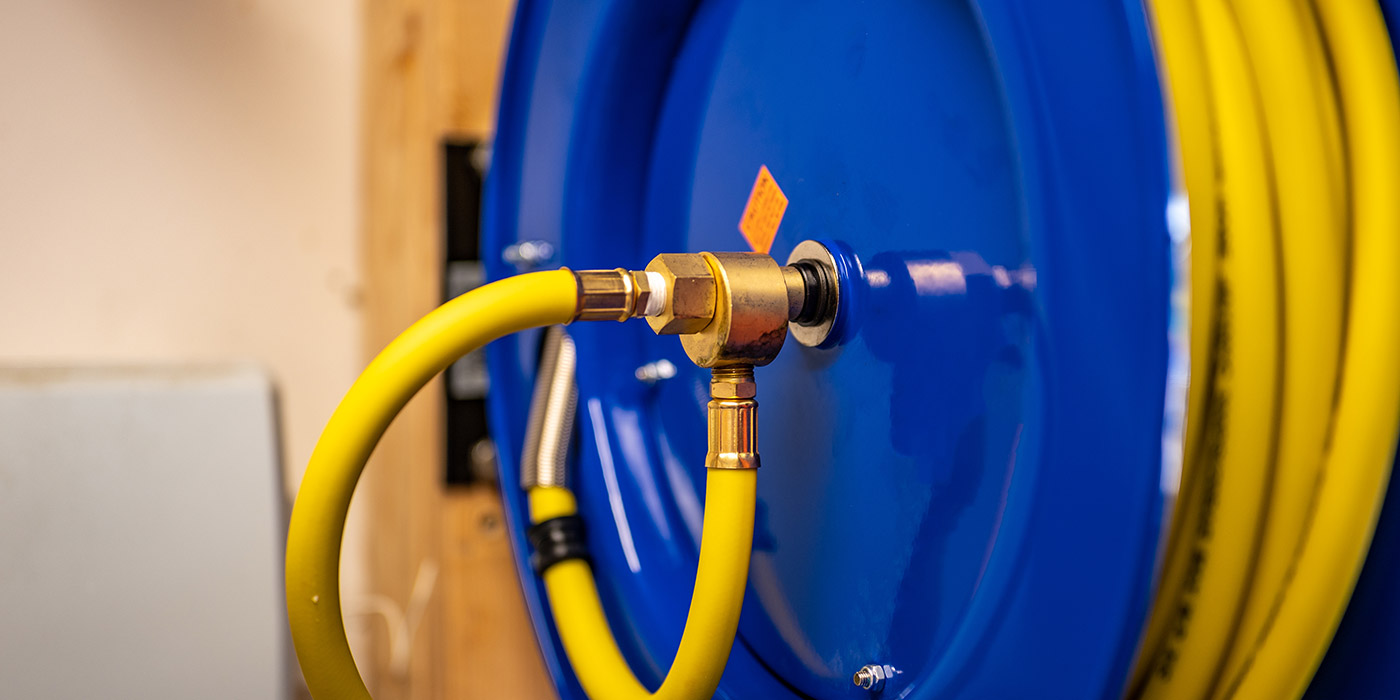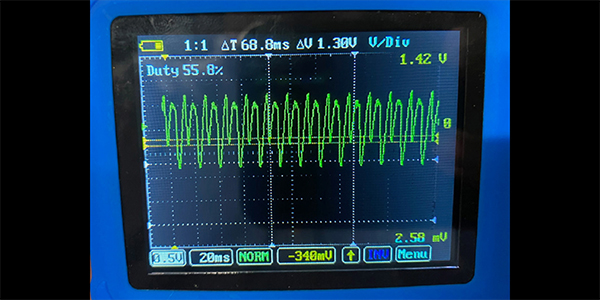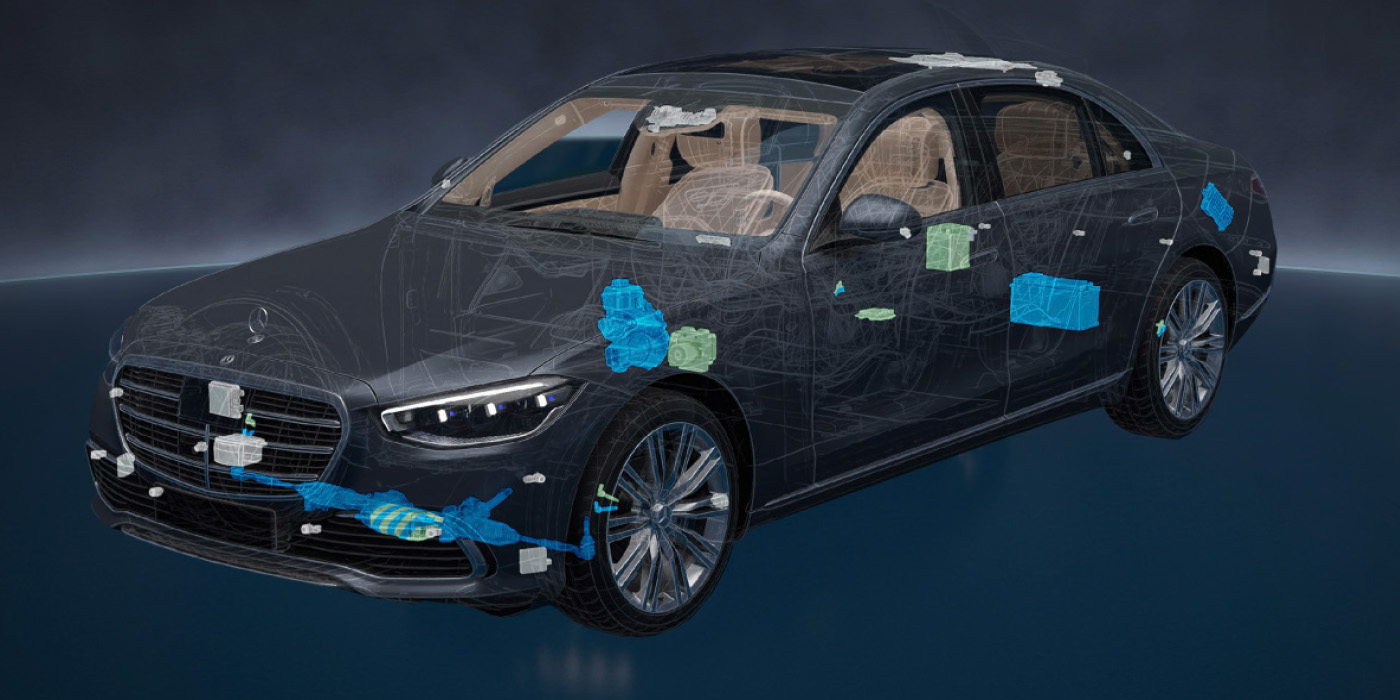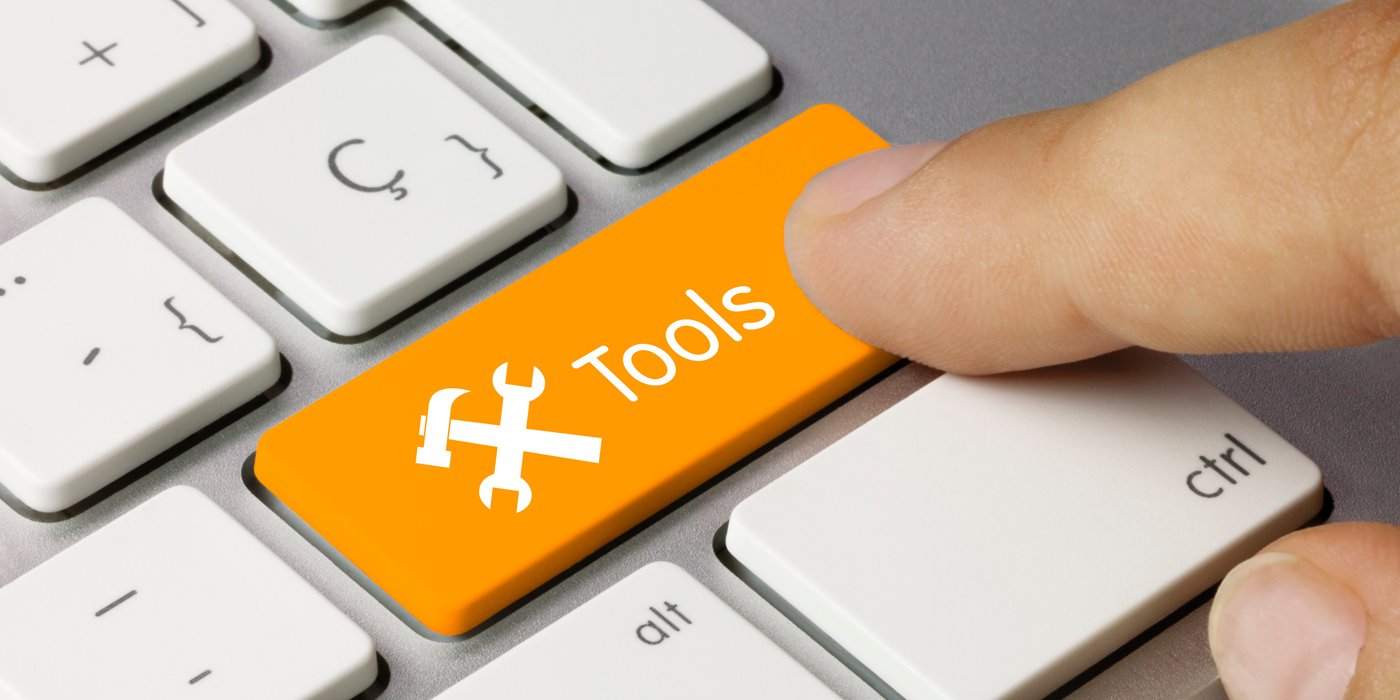“Why in the world do I even have this thing?”
Today we’ll be talking about why technicians always seem to save a ton of parts.
The main reason that I’m talking about this is I just spent almost five hours in the crawl space organizing all of the parts I’ve accumulated over many years of being an enthusiast as well as an automotive technician.
When I left the Volkswagen dealership, I brought all my stuff with me and basically just shoved it in the crawl space until a day where I would have a little more time and energy to deal with it. Well this was that day. We were having some construction done around the house and I needed to get that stuff out of the way so the dudes could work on the house.
Heading into the crawl space, I first find a 1.8 (not turbo) block from the Cabrio as well as a 1.4L out of a hybrid Jetta from Lord knows when.
There’s a box full of electronic parts, wheels and tires, and an old head gasket — Charles, what do you need to keep that for? — a cylinder head, steering wheel, axles, a Mark 3 wiring harness … ugh, I forgot how much stuff I had down here. And I actually need to get all of it moved over to one side to make room for the workers.
But why is it that I have all of this stuff anyway? Well, there’s a handful of reasons why I just can’t bring myself to throw out a lot of the stuff. I’m going to go ahead and say it right here: I’m like this far away from just being a ridiculous car parts hoarder because some of this stuff I have no use for it all.
However, as a technician, having some of these parts really comes in handy. Whether it’s a random bolt that you need or maybe a test module. I know while I was digging through that stuff I found a couple of things that were test modules that maybe had a very slight failure or an intermittent failure and we replaced it and kept the old one because if another car had a similar issue, you just swap it really quick and see what would happen.
Now that’s not the end-all, be-all diagnosis of course but if you could take a relay out and slap a new relay in because you have one in the bottom drawer of your toolbox, it’s generally a worthwhile thing to do. There’s a 409 relay, a fuel pump module relay for a Mark 4 that randomly will sound the door open chime in the cluster if you have it in. So I kept that one. But for me the main reason, initially, it started out as hey, this could be a test component. I have a test door latch, a test air flow meter, a test relay, whatever it is, we had these extra parts so that we could just do a quick test and see what would happen. Did it completely change the behavior of the failure (or whatever was happening), did it do nothing, did it change the way it failed?
See, one of the good things about a failed part that you use as a test box (as long as it’s not totally dead), is you know exactly what’s wrong. So, let’s say you have a door that won’t unlock and you have a window module that the motor just died. So, everything else worked, it just didn’t have enough strength, maybe the brushes were bad or maybe they were just dirty and you put a new one in because it was under warranty. Well, now we know if the door is doing something weird, we can just plug the test box in and see what happens. Again, not the end-all, be-all of diagnosis, and some may argue that’s not even diagnosis anyway that is called what my good friend Mike calls tryagnosis (which I think is hilarious!) but, it is an option and sometimes it’s a really good option.
So, I started keeping all this stuff for test components. Then things got weird and I started keeping things like random bolts.
A great example is brake caliper bolts for the backs on Mark 4s and Mark 5s. I would keep the old ones to use as belly pan screws, because if you’ve ever taken one of the belly pans off a Mark 4 Beetle convertible, you’d understand. It’s probably the worst belly pan ever in the history of the planet (worse than Eos I might add), because the screws were triple squares and, of course, people would run stuff over and partially sheer off the head so you couldn’t get your triple square in there and you’d end up having to use a chisel and hammer or an extractor. So we would replace those with a 13mm.
You just never know when you’re going to need that random screw, that random bolt. I can’t tell you how many times I’ve been doing a job and you just need one extra bolt or one extra piece of hardware and you dig through the bottom drawer of your toolbox and can’t find it. But your buddy in the bay next to you has one in his stash.
So that’s what started it all off. Now, as an enthusiast and a technician, I think it gets even worse, because now I have twice the possible opportunities for collecting and using these parts.
For example, wiring harnesses were something I never threw away … you never knew when you maybe need a pin out of a connector or the connector itself because one was smashed or the little clip or lock was broken. So I started saving all this and now I’ve accumulated an insane amount of stuff. Things like bent wheels that one day I’ll make a cool end table out of … or the rear glass for a Cabriolet …
While I think it’s important to save some parts to have for testing or backup work, it’s also helpful when your own car breaks. That’s why I started driving Volkswagens to being with. I got a good deal on a VW Cabrio (when I worked at the dealership) and I knew that if something broke, I would have a part that would work or someone nearby would have it.
Now you do have to be careful, it can get ridiculous, which is kind of where I think I am. Needless to say, the crawl space is definitely not the only place I store car parts! However, you never know, one day, I’m going to need all that stuff!
OK, I spent some serious time getting everything cleaned up. But there’s a lot I couldn’t part with. I still have the 1.4L engine chilling here. This one actually had a cylinder one knock or something like that got replaced under warranty. I still have probably every spark plug I replaced at the dealership in a box (just kidding). An alternator, a relay block for a Mark 4, a VR6 head gasket, a steering wheel, Mark 4 springs, a catalytic converter, oil pans, a transmission, a whole box of DSG parts, the complete Mark 3 wiring harness, a brand new set of Mark 7 GTI springs, busted Golf R wheels, roof racks and box after box of random car parts.
The video shows all the parts and some unique ones you can take a guess at, so be sure to check it out!
So what do you think? Is it worth saving those extra parts or should I just rent a Dumpster and put it all in the trash and start over? Give me your thoughts in the comments underneath the video.

